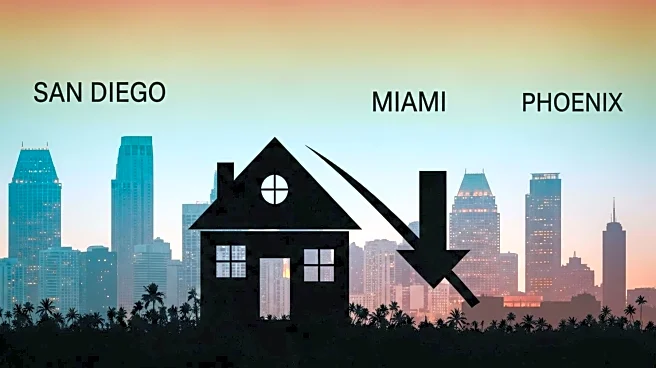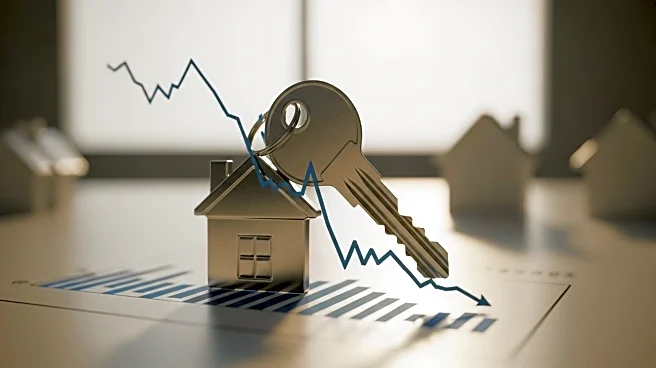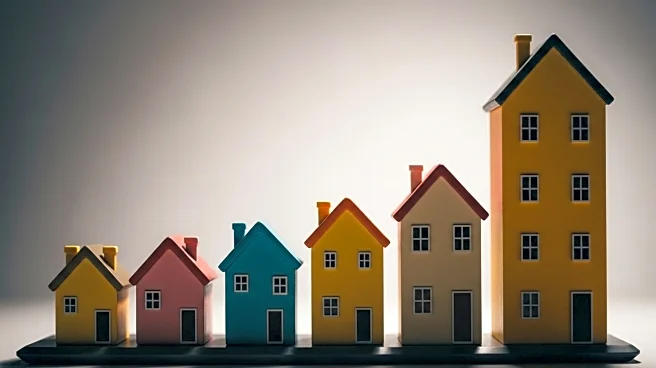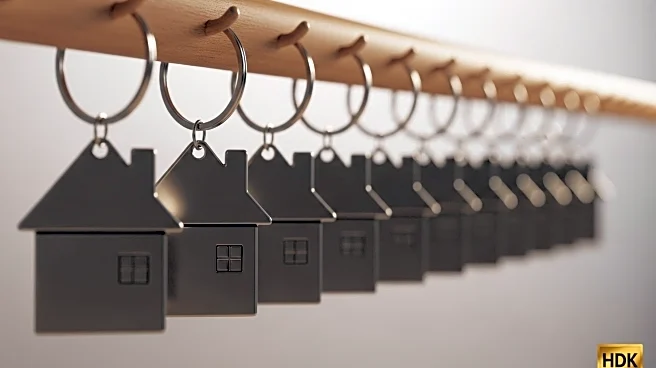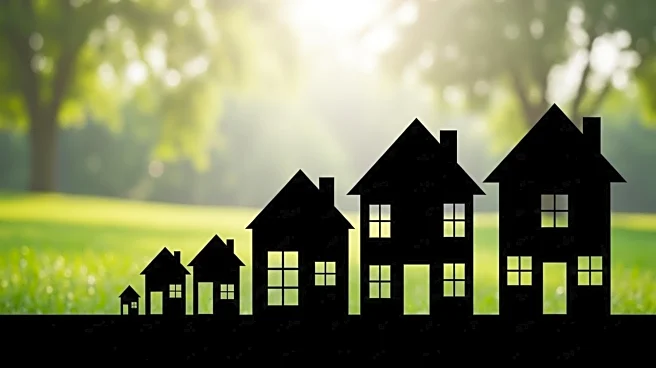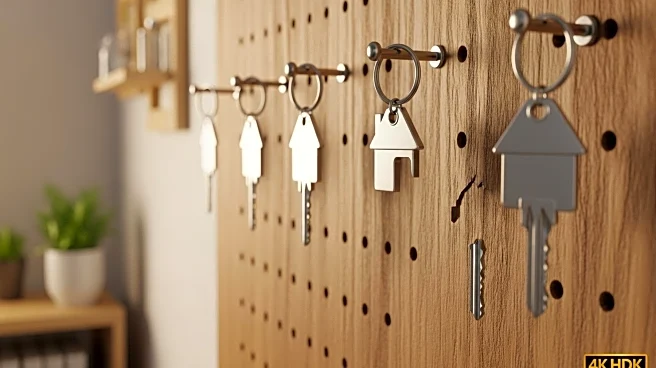What's Happening?
The U.S. housing market is experiencing a notable decline in the number of home sellers, marking the first drop in two years. According to a recent analysis by Redfin, a Seattle-based online brokerage, the total number of sellers fell to 1.95 million in July, down from May's peak. This decrease coincides with a record low in homebuyer activity, with only 1.43 million buyers in July, the lowest level since the onset of the COVID-19 pandemic. The disparity between sellers and buyers has reached its widest margin since tracking began in 2013, with 36% more sellers than buyers. Redfin's senior economist, Asad Khan, attributes this trend to high home prices, elevated mortgage rates, and economic uncertainty, which have spooked both buyers and sellers. Some sellers are opting to delist their homes or refrain from listing altogether due to prolonged market times and lower-than-expected sale prices.
Why It's Important?
The decline in home sellers and buyers reflects broader economic challenges impacting the U.S. housing market. High mortgage rates and home prices are deterring potential buyers, leading to a more buyer-friendly market reminiscent of the 2008 financial crisis. This shift could have significant implications for the real estate industry, affecting home values and market dynamics. Areas with affordable listings, such as Buffalo, St. Louis, and Cleveland, may see increased buyer interest, while regions like Los Angeles with low affordability could struggle. The Sun Belt, including cities like Austin and Phoenix, is experiencing growth in affordable listings, potentially easing price pressures and boosting inventory.
What's Next?
As the housing market continues to adjust, stakeholders such as real estate agents, builders, and policymakers will need to monitor these trends closely. Builders in the South are credited with keeping up with demand, which may serve as a model for other regions facing inventory challenges. The ongoing economic uncertainty and fluctuating mortgage rates will likely influence future market conditions, prompting sellers and buyers to reassess their strategies. Policymakers may consider interventions to stabilize the market and address affordability issues.
Beyond the Headlines
The current housing market dynamics highlight deeper economic and social issues, including income inequality and regional disparities in housing affordability. The trend towards more affordable listings in the Sun Belt suggests a potential shift in population and economic activity towards these regions. Long-term, this could influence urban planning, infrastructure development, and local economies.


